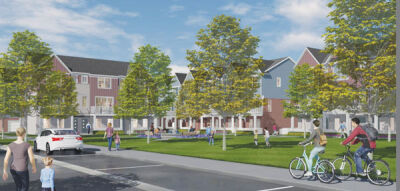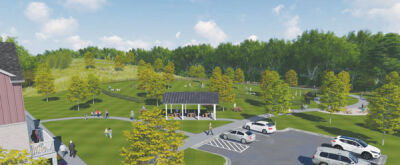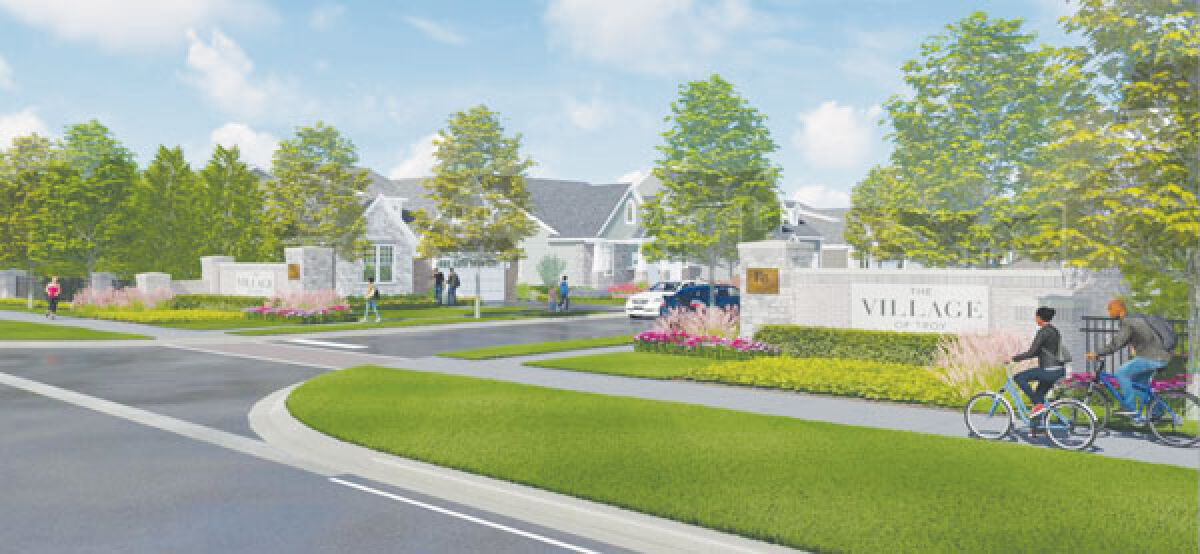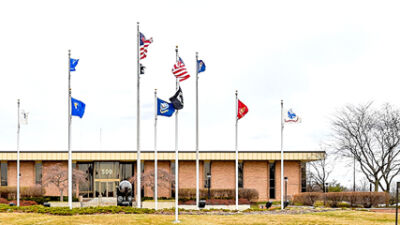
Despite additional challenges in the development process, the Robertson Brothers will develop a 20-acre parcel of land near the intersection of Long Lake Road and Rochester Road that has sat idle for more than 20 years.
Image provided by Brent Savidant

By converting three different zoned parcels into one planned unit development, the city of Troy will now work with the Robertson Brothers to develop a long-unused portion of land in the city, as shown in this concept art.
Image provided by Brent Savidant
TROY — A large section of land near the intersection of Rochester Road and Long Lake Road will now be developed for use after sitting idle for more than 20 years.
At its regular meeting Feb. 27, the Troy City Council unanimously approved the rezoning of a 20-acre parcel of land into a planned unit development so that it may be developed into a new residential area, with green space and trail access.
“The City Council voted to approve the concept development plan for the development, as well as the preliminary site development plan,” explained Brent Savidant, Troy’s community development director. “The rezoning of it to a PUD also was approved as part of this. It was three different zoning districts prior to that.”
The Robertson Brothers development group will now create what it is calling “The Village of Troy” at the location.
“We’re always interested in developing in Troy. It’s a great market with great schools. We always look for opportunities to build more homes there. This land had some extra difficulties. We had to take some extra time to get a plan together, and we think we came up with something that everyone will like,” said Tim Loughrin, the director of land acquisition for Robertson Brothers. “It was large enough to develop the three different housing types. Having different price points is always ideal. With industrial to the south and commercial to the east, it made sense to be flexible.”
Savidant said city officials were glad to finally have a plan in place to put the land on the tax rolls.
“The developer is proposing three different housing types for 20 detached single-family homes, 56 attached single-family homes, and 70 attached townhomes,” he said. “Also included are a number of amenities, which includes a community park with pavilion, dog park, and hill that can be used for purposes like sledding. It accommodates a nonmotorized trail that runs through the property as well.”
The sizes of the homes will range from 1,300 square feet to 3,110 square feet. The city expects this to equal an additional $1,002,750 in tax income per year. This compares to the $25,400 the land currently brings in. It sat unused for so long due to complications that would have to be dealt with in order to develop it.
“The land, approximately 20 years ago, was used as a construction staging area for various projects,” said Savidant. “Fill was placed there. Aggregates were placed there. There were chunks of concrete and gravel left on the site, so the ground wasn’t clean enough to support foundations. That adds an extra cost to develop the site, so it wasn’t developed for a long time despite the good location.”
These difficulties were addressed by declaring the area a PUD, which allows the three differently zoned parcels to be converted into one area that could be developed together and removes some other impediments to developers.
“Planned unit development is a negotiated process, so everything under it is negotiable,” said Savidant. “It permits flexibility in design and use so it can be compatible with the neighboring land, height requirements and building types. It combines flexibility for the developer and predictability for the city.”
Some in the community expressed concern that this was being done so the developer could fit more units onto the property than would otherwise be allowed, but Savidant said this was not the case.
“I want to be clear that this wasn’t a developer seeking a PUD to accommodate more units on the property,” he said. “Really the flexibility they wanted was for layout, not the density of the amount of homes on the property.”
Loughrin said this development process should allow the property to be made into something that will benefit the community as a whole.
“What makes this unique, besides it being so large and the village approach to it, was how much we have been able to work with the city on this. We worked with them on this pedestrian pathway that provides a connection to their existing pathways, for instance,” he said. “Calling it The Village of Troy brings home the point that there are a number of housing types there. You have a mix of people from different walks of life. The DPW salt dome is nearby, and we wanted to screen that with a hill. (PUD status) helps with our challenges to develop the site, such as the rubble left there that was unfeasible to move. Now we could use it to create that hill. It also gives people a good view of the wetlands nearby.”
Loughrin said that The Village of Troy is expected to be completed in mid-2024.
“The hope is that we can start development this year and pave it by the end of the year. There are a lot of steps, like final engineering and getting wetlands mitigation credits we need to do,” said Loughrin. “It may be a 2024 development. People could be moving in by mid-2024. That’s what we’re aiming for.”
 Publication select ▼
Publication select ▼





















